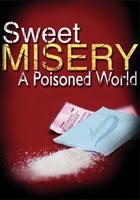
CBS News
(CBS) As efforts continue to stop the mammoth oil leak from the sunken British Petroleum rig in the Gulf of Mexico and contain the potential damage from the resulting spill, question s are being raised about how big the leak really is.
CBS News Correspondent Mark Strassmann reports, "Several scientists believe the actual leak has been grossly under-reported -- not 5,000 barrels a day, but as much as 14 times higher, or 70,000 barrels a day, which BP denies."
And, on "The Early Show on Saturday Morning," Florida State University oceanographer Ian MacDonald said, all else aside, "This is an unprecedented emergency. We've never had a spill of this magnitude at this depth go on for so long. They have to be trying everything they can (to plug it) and they also have to understand that this is beyond their previous experience."
In an interview with the British newspaper Guardian Friday, BP CEO Tony Hayward said, "The Gulf of Mexico is a very big ocean. The amount of volume of oil and dispersant we are putting into it is tiny in relation to the total water volume."
MacDonald told co-anchor Chris Wragge, "That is scandalous. We don't need a filthy rich executive in his London penthouse telling the people of Louisiana and Florida that the Gulf of Mexico (spill) is tiny."
What's more, MacDonald continued, "We could be doing much better at estimating these rates both on the sea floor and on the surface. But the point is, what surgeon trying to save the life of a patient on the operating table would say, 'I don't need to know how bad the bleeding is?' Of course we need to know how bad the leak is, because we need to know if these measures are working. So it's essential to know how fast the oil is coming out of this leak, and how much is reaching the surface. That's the only way we'll know if these measures that we're taking are having any positive effect."
Making estimating even tougher, MacDonald points out, is that, "They have sprayed coming up on half a million gallons of a dispersant ... a powerful detergent. And what it does is it breaks the oil down into tiny droplets that then stay suspended in the underwater. So, a large fraction of the oil that's been released is actually under the water at this point, and we're not entirely clear where it's going as oceanographers."






























No comments:
Post a Comment